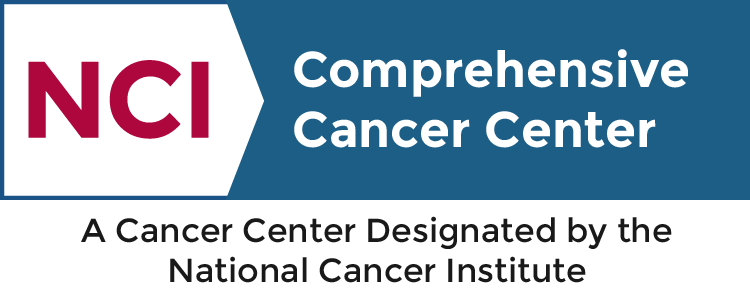Adolescent and young adult (AYA) cancer patients are aged 15 to 29 years. They face unique challenges relative to their age when undergoing treatment and once treatment has concluded. To support this population, Stanford established the Stanford Adolescent and Young Adult Cancer (SAYAC) program in 2015. Pam Simon, NP, SAYAC program director, outlined the challenges this age group faces and detailed how Stanford supports them through their cancer journey.
Unique life challenges
AYA patients can be treated in pediatric or adult units, but they don’t fit perfectly into either of these groups and the systems are not set up for them. AYA patients have different needs than the pediatric or adult cancer patients providers may normally treat, so providers may not understand their needs or how best to support them.
“There are so many changes and developmental milestones that are supposed to happen throughout this age span. How do we support all of these changes as they go through treatment into survivorship and beyond?”
Common challenges for this age group include education, fertility, and relationships, which all differ from those of a child or adult with the same diagnosis. Financial toxicity, where a patient may be in debt after treatment and not able to pursue the career they want, is also a concern. Additionally, it can be difficult to find a primary care provider as the patient gets older who understands the long-term effects of having cancer as a child or AYA.
Differences in disease and treatment
Symptoms and treatment can differ in AYA patients compared to other age groups.
“Leukemia is the first disease that made us think about how cancer is different for AYA patients. The survival rate of this age group was declining, whereas it was increasing in children and older adults. So that made people say, ‘Wait a minute, what is going on here?’ And that’s when the AYA population of patients came up as a different entity.”
At the time, pediatric clinical trials had a maximum age of 18 years, and adult clinical trials had a minimum age of 30 years, so there was a lack of data for cancer patients aged 19-29 years. Pediatric-based trials were found to be more successful for AYA patients, so researchers started working on making the protocols in adult clinical trials similar to pediatric trials for the AYA population to allow this population to enroll in trials.
Simon notes that while more information is being discovered about this population, some of it raises further questions that would benefit from clinical trials; an example is the increase in gastrointestinal cancers in young people and the causes fueling this increase.
Side effects can also be different in this population, such as nausea and post-traumatic stress disorder (PTSD), the latter of which may look different and require different approaches in AYA patients compared to adults. Simon adds that there’s a lack of psychosocial research in areas like PTSD, fear of cancer recurrence, and financial toxicity that could shed light on understanding the full spectrum of AYA patients’ needs and support.
Simon emphasizes that it’s imperative for providers to listen to AYA cancer patients to determine what they need differently than the pediatric or adult cancer patients their units typically treat.
“It’s important to talk and listen to patients instead of saying, ‘We have a protocol to treat this type of cancer, and we see these side effects, and this is how we treat them.’ It may be different in AYA than adults or children, so we should be doing trials to find out what is different because we don’t know all the answers to these questions.”
She also speaks to the importance of providers getting to know AYA patients as individuals and making them feel comfortable, as AYA patients may feel anxious and uncomfortable asking for more information or wanting their parents more involved in their care. They don’t see other patients their age in clinic, or the environment doesn’t feel right. An example is an adolescent who is being treated in a pediatric unit that is decorated with kids cartoons and that has child-sized tables and chairs.
Stanford Adolescent and Young Adult Cancer Program
AYA cancer programs are critical in figuring out how to best support AYA patients through diagnosis, treatment, and survivorship, regardless if they’re being treated in a pediatric or adult unit, and in making environmental changes to improve their care.
Before launching the SAYAC program, Stanford cancer providers treating similar diagnoses in pediatrics and adult units may not have worked together. Simon started having meetings with pediatric and adult leukemia providers to facilitate discussion on what they have in common regarding treating AYA cancer patients and what they could do to improve treatment and outcomes for this age group.
“That was amazing because it really opened up a lot of people to say, ‘We could do this or how come we can’t do this.’ So what’s starting to happen, which I think is exciting, is a 20-year-old patient will be referred to one side and they don’t have an open trial, so they’ll call the other side to see if they have an open trial and consider if it’s more appropriate for this patient to be treated in that unit if they can enroll in a trial, which is huge, and it’s starting more in other diseases as well, such as sarcoma and lymphomas.”
While SAYAC has made inroads in shifting the culture around AYA patient care at Stanford, Simon says that each unit has unique barriers to change. She explains that it’s easier to make changes in pediatrics because typically all pediatric oncology is in the same clinic, but you still have to work within a culture focused on children to find solutions that are appropriate for the AYA population. In contrast, adult cancer centers are larger and have separate programs based on the cancer that’s being treated, for example, a clinic that treats GI cancer. AYA patients are spread throughout the different programs, which makes navigating them and promoting change difficult.
Simon speaks to the need to support AYA patients as they make treatment decisions in both pediatric and adult settings. She notes that AYA patients may want parents more involved during their treatment decision-making, which may not be the norm in the adult settings. Currently, SAYAC is assisting researchers in studying decision making in a research protocol to help support AYA patients in both pediatric and adult settings.
In addition to treatment decisions, there is also a need to support AYA patients with fertility decisions. Simon says that one of SAYAC’s biggest achievements so far is building fertility support so patients understand their risk and have the information to make the decision that is right for them for their unique circumstances. Simon explains that current fertility cancer research was conducted in an older population, and more research needs to be conducted to increase our understanding of fertility challenges for the AYA population once treatment has concluded.
Telling stories and finding community
One of the unique challenges AYA patients face is isolation. Typically, patients haven’t met another person their age dealing with cancer. Additionally, diagnosis and treatment occur when the AYA patient would normally be establishing their own independence by going to college, finding a career, or starting a family. The cancer diagnosis may require the patient to move back home for treatment, and the patient may feel stuck during a time they expected would be spent discovering who they are and forging their own lives. The patient’s family and friends may also not completely understand what the patient is going through, leading to increased isolation.
To ease isolation, SAYAC seeks to build a community of other AYA patients so they can find mutual understanding and learn from others’ experiences on what to expect, what questions to ask, and how to move forward on their journey.
As part of this community building, SAYAC collaborates with the Stanford Health Library to publish a magazine telling the stories of Stanford AYA cancer patients in their own words. These stories help other Stanford AYA patients know that the community exists, and they help other people understand the issues this population faces. SAYAC also holds regular Zoom meetings, bringing together Stanford AYA patients to facilitate the writing and sharing of their stories.
Another part of building this community is having providers who understand how to support these patients and their families. SAYAC created the Patient Family Advisory Council so patients and their families can meet with staff to discuss both patient and caregiver needs.
“We try to embed the patient voice in everything we do because that’s the only way we’re going to understand how we can move the needle even further when it comes to treating AYA patients.”
Viewing AYA patients through a different lens
Simon points to her 25 years as a provider where she was on the outside looking in. After her work with the AYA population, she understands it’s vital for providers who take care of these patients to see them from a different lens than they’re accustomed to and to listen to their stories to understand the differences in their needs.
“SAYAC is about helping AYA patients understand where they're at, who they are, and what this all means so they can put one foot in front of the other and start moving through this journey in whatever way that means for them. Our program helps them see what other patients say, what we know, and what we don't know so that they can put all this information together and make decisions that allow them to move forward.”
April 2024
By Katie Shumake
Image: Canva



